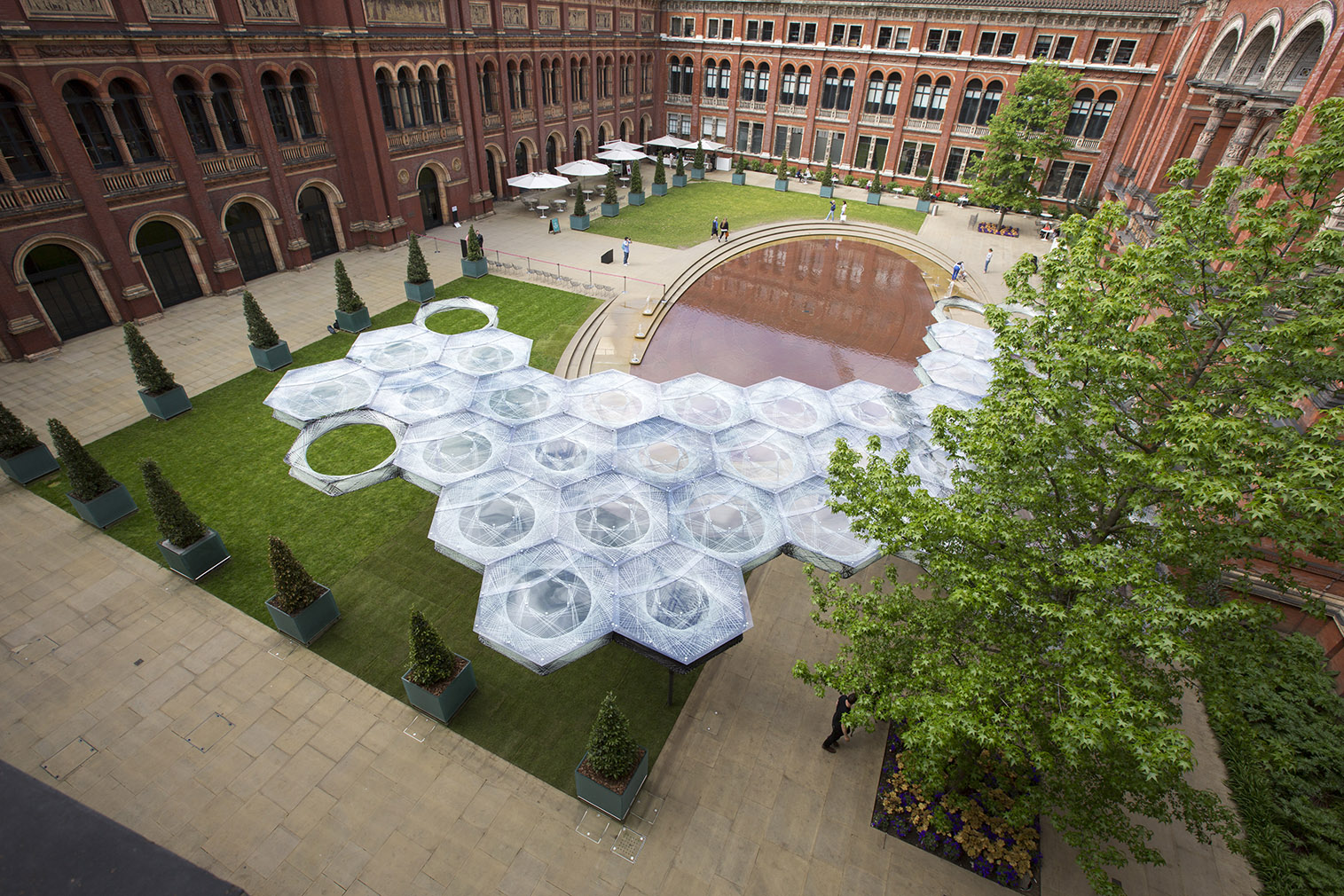Machines are taking over the world, and a new robot-built pavilion in the courtyard of London’s V&A is proof.
Architect Achim Menges designed the Elytra Filament Pavilion – a canopy of tightly woven carbon fibre cells – drawing on the durable, yet lightweight, shells of flying beetles called elytra.
The structure currently comprises 40 hexagonal parts, but on-site robots will continue to build up the pavilion during its residency at the museum.

Credit: Victoria and Albert Museum, London

Credit: Victoria and Albert Museum, London

Credit: Victoria and Albert Museum, London

Credit: Victoria and Albert Museum, London
‘In a similar way that Victorian society was strongly influenced by the first industrial revolution, I think we are experiencing now another paradigm shift in what is often called the fourth industrial revolution,’ said Menges.
‘This term, the fourth industrial revolution, refers to new modes of habitation, in design and engineering, and adoption of new kinds of materials for architecture. What we want to do is showcase the ramifications of that, the way we perceive the future.’
The 200 sq m Elytra Filament Pavilion weighs 2.5 tonnes – equivalent to just 2 sq m of the V&A’s bricked structure.
Robots are building this new pavilion at @V_and_A. Story coming up… pic.twitter.com/PyHPKQ50W5
— The Spaces (@thespacesmag) May 18, 2016
Sensors in the installation will also provide data on how visitors move under the canopy, and inform the design of the pavilion as it evolves over time.
‘This allows us to conceive this design, not as a final instance, but as an agile space – a canopy that responds to its users,’ added Menges.
Architect Moritz Dörstelmann, structural engineer Jan Knippers and climate engineer Thomas Auer also contributed to the project.

The pavilion, on display until 6 November, is part of the V&A’s inaugural Engineering Season, which includes an exhibition about designer and engineer Ove Arup beginning on 18 June.






















